KARMA: The Dark World preview: Weird-fiction at its best
Grabbing an 80s-styled television from a freezer and screwing it onto the headless body of a deceased person before being chased down an endless series of twisting and rotating hallways by a four-armed monster was just one of the many strange experiences I enjoyed while playing the demo of KARMA: The Dark World.
KARMA: The Dark World embraces the rising popularity of the weird-fiction sub-genre of science fiction – think Remedy Entertainment’s Control – and combines it with elements of psychological horror to create something that feels fresh, intriguing, and wonderfully bleak.
Set in a dystopian East Germany in the year 1984, a totalitarian company known as the Leviathan Corporation rules over its citizens by promising Utopia for those who serve it. The game follows Daniel McGovern, a Roam Agent for Leviathan’s Thought Bureau who is tasked with using technology to dive into the minds of accused criminals and report his findings back to Leviathan. As expected, his investigations lead him to uncover dark secrets through the horrors of his suspects’ minds, where reality and the surreal blur.


My time with the demo started with Daniel waking in a hospital room with no memory of who he is, including his name. I explored the room by interacting with a few of my surroundings: a note told me to head to the “Transition Room”, a chest of drawers was filled with cassette tapes, and a framed photograph of people I, and Daniel, didn’t know. Everything felt very personal, as I clicked the Xbox controller’s RT and LT buttons to grab, read, and put down items, and the thumbsticks to rotate the objects.
After witnessing some strange Matrix-styled glitching outside of the building, I left the room by gripping the exit’s doorknob and pushing forward with the thumbstick. I paced myself through several calibration rooms where I was instructed by Leviathan to set my sound, camera, and display settings – it’s the first time I’ve seen a game task you to optimise the game’s settings within the game, and I loved the blending of our real-life with the in-game setting.
Progressing, I moved into a Cultivation Room, where I stumbled upon a pile of corpses and humans resting in glass incubators. Approaching a door where a sole test subject had collapsed beside, I was tasked by a voice from behind the door to dump the collapsed subject into the pile of other bodies. I did so without ever questioning why, grabbing the body, carrying it to the pile of corpses, and dropping it thoughtlessly.

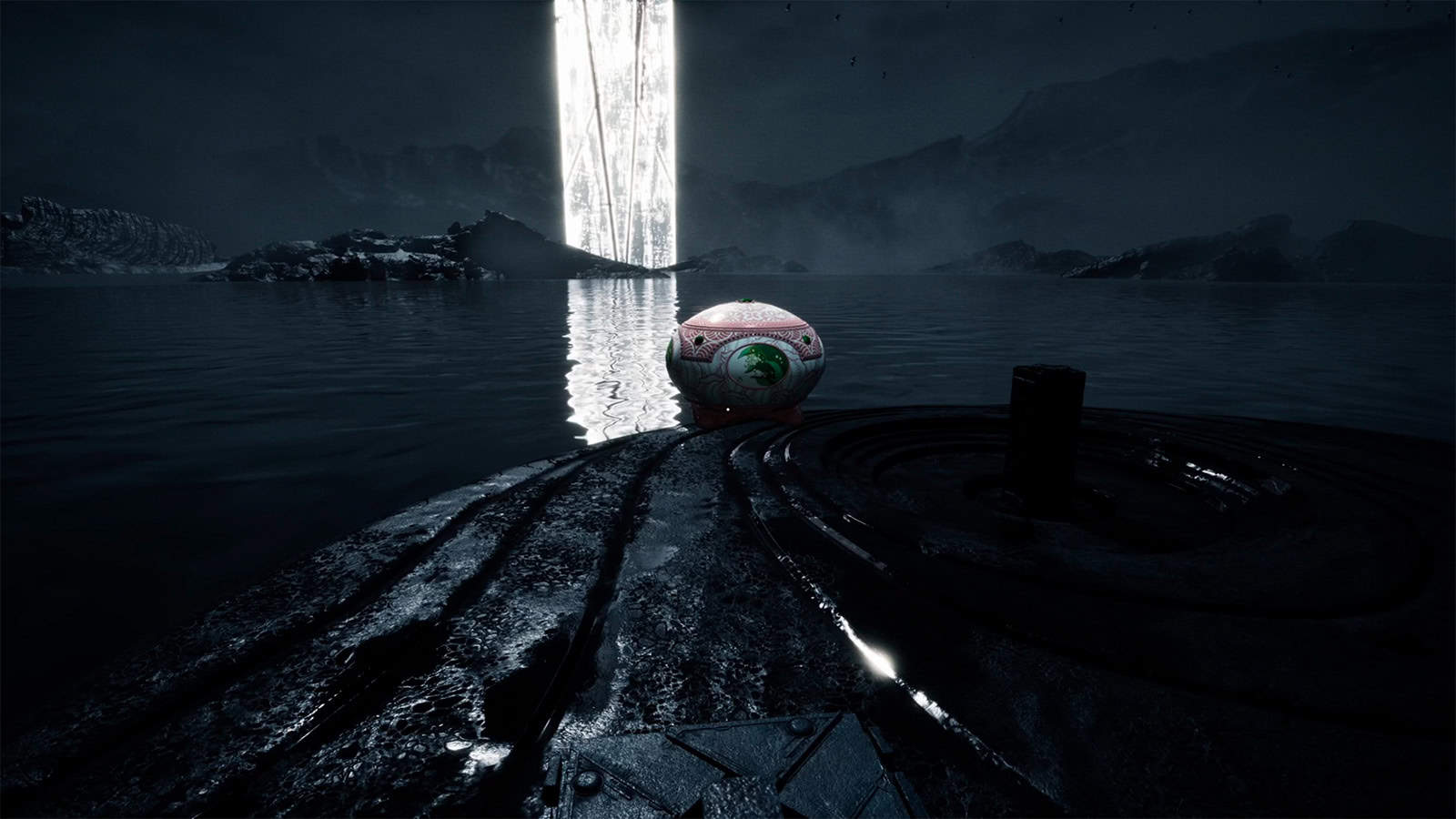
After dumping the body, I was allowed into the Transition Room, where I was able to put an old man’s face to the mysterious door’s voice. He unsettled me, spoke cryptically about how I was different from others, and informed me of Daniel’s name before strapping me into a chair and drowning me.
When I awoke in some rocky alternate dimension with a glowing white pillar at its centre, I interacted with one of several nearby altars, opening it to reveal a pink music box that triggered the memory of one of the suspects you’ll interview as Daniel.
Life at Leviathan
I was now Daniel experiencing the memory of a suspect named Shawn. A cutscene plays, where Shawn, sitting in a cosy Leviathan office, admires the same pink music box I found moments earlier. As he stores it, he finds a tape recorder and listens to a discussion between a professor and a student about mutating experiments.
Just as the recording begins to get interesting, the office’s lights power out and a gigantic four-armed monster, bathed in dark red light, stalks into the room calling for Shawn. Crouching, my objective is to escape the room and the monster. I began to sneak towards the red-lit exit by using desks as cover, occasionally cowering in fear because I’m just not good with horror. Once I realised the monster remained stationary – I’m unsure if this was intentional or a bug – and after seeing it look directly at me with no consequences, I crawled to the exit, dropping the musical box in the process and alerting the monster.
A chase ensued, where I, with a prosthetic leg, attempted to escape by holding the Xbox’s LB button and slowly running down a dimly lit staircase as it shrieked after me. Barely escaping, I crawled into a vent lit by colourful Christmas baubles where Shawn (And I) pondered why the recorder and monster were both with him again. Following the lights, I found documents about Leviathan employees trading for drugs known as Bluebottles, and I followed a series of daisy flower beds sprouting from the vent’s ceiling before dropping into a strange new room.




It’s littered with desks and hanging signs that read “Obey”, and several dog statues hold employee memos about dangerous goings on – a black sedan drugging people and stealing organs, implications that Leviathan has been terminating unfaithful employees, and more. A mountain of televisions has been delicately placed around a door at the room’s centre and a looped recording of a muffled voice states my instructions:
“Broken, TV, Graveyard, Work, Start” with an added “Happy Holidays” in the same dreary tone.
To the left of the room is the graveyard; a single tombstone surrounded by broken televisions in dumpsters. I follow my instructions, locating a broken television and carrying it to the graveyard to complete a puzzle. The room changes: a door opens, the statued dogs begin to violently shake their heads, and faces appear over every working television. I leg it.

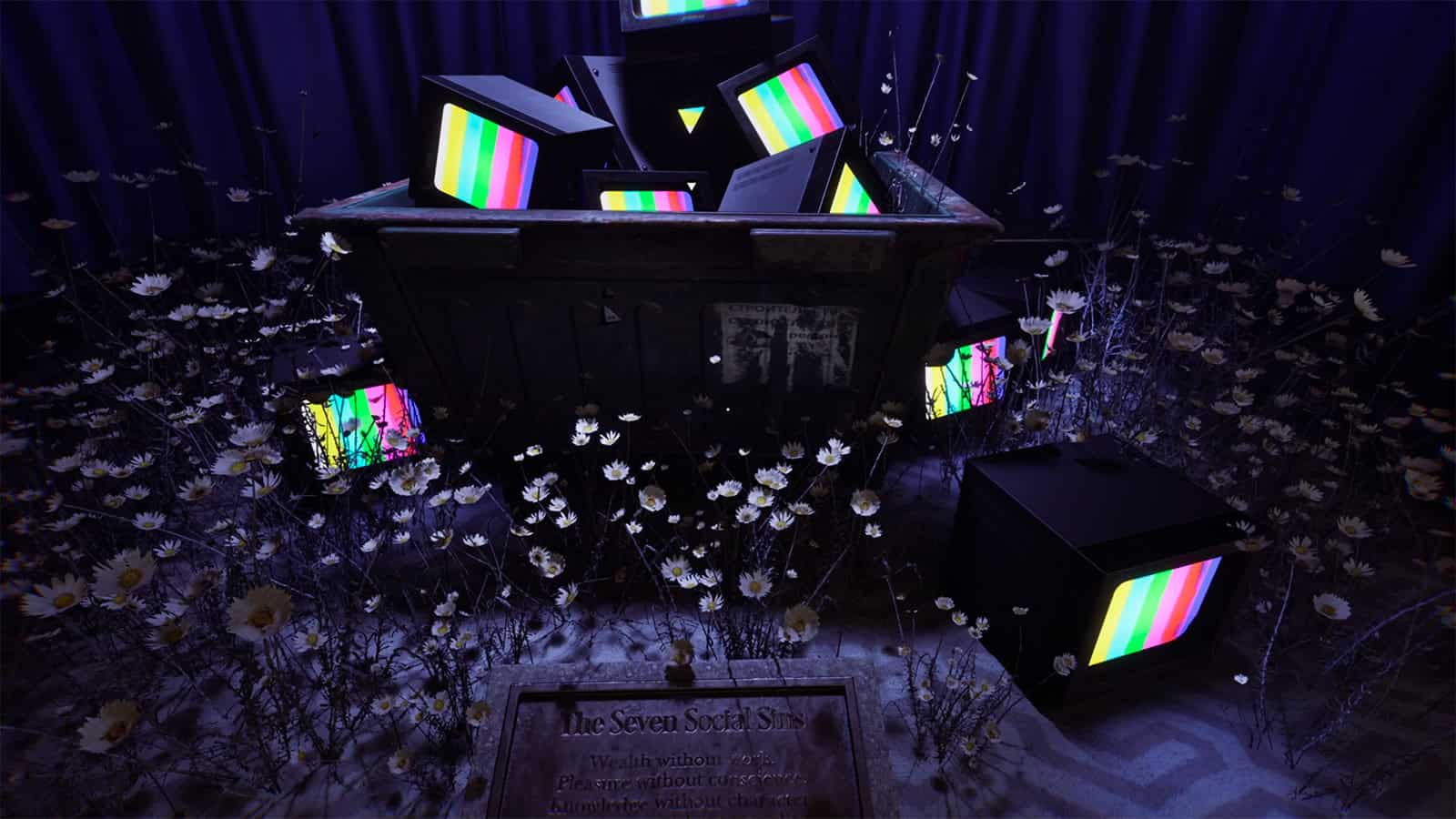
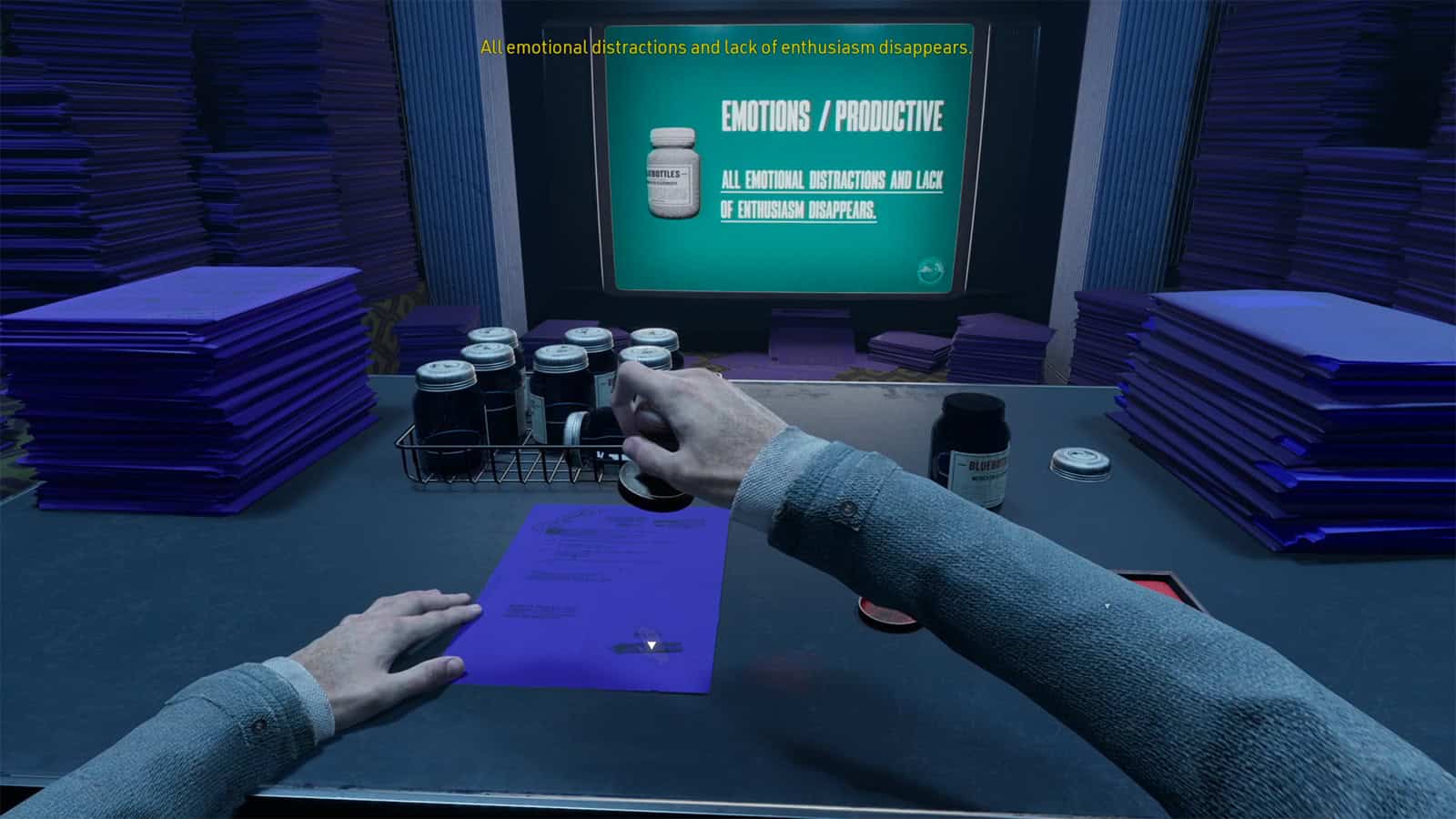
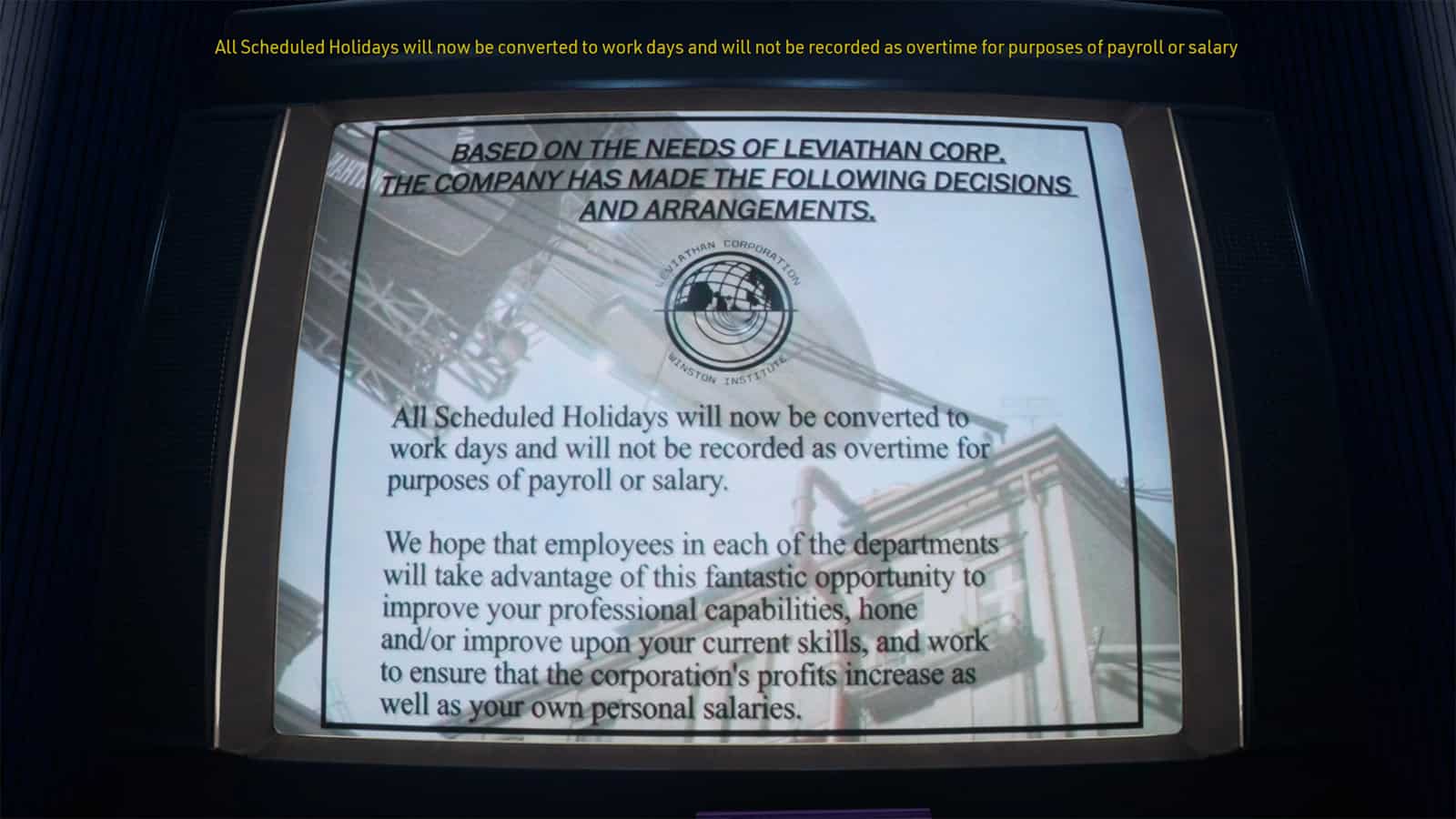
Stepping into a purpled-coloured office, I’m forced to complete a shift for Leviathan as a cinematic clip about Bluebottles – the addictive drug that heightens obedience amongst Leviathan Corp employees – plays. I stamp file after file, ink my stamp, stamp some more, recall troubled moments with colleagues, drink Bluebottles, and stamp still more until Shawn breaks into a cry and a voice breaks Leviathan’s intermissions to tell us to stop consuming the drug.
I leave the office and return to the graveyard room, but it’s been flipped upside down and the televisions play voice memos. Scampering across the room’s ceiling and into a locked corridor, I remove a television from a freezer covered in sticky notes reading “HELP” and screw it onto the headless body of a test subject.
The four-armed monster from earlier then attempts to break into the room. A second chase ensues, this time more chaotic and terrifying than the first. I run along hallways that twist and re-shape. Doors close and open, walls move, the floor drops and rises, but then it abruptly stops. Unfortunately, the creature closes in, seeking out Shawn and the tape recorder. I’m pulled out of Shawn’s memory and I’m back as Daniel, ending my time with the demo.
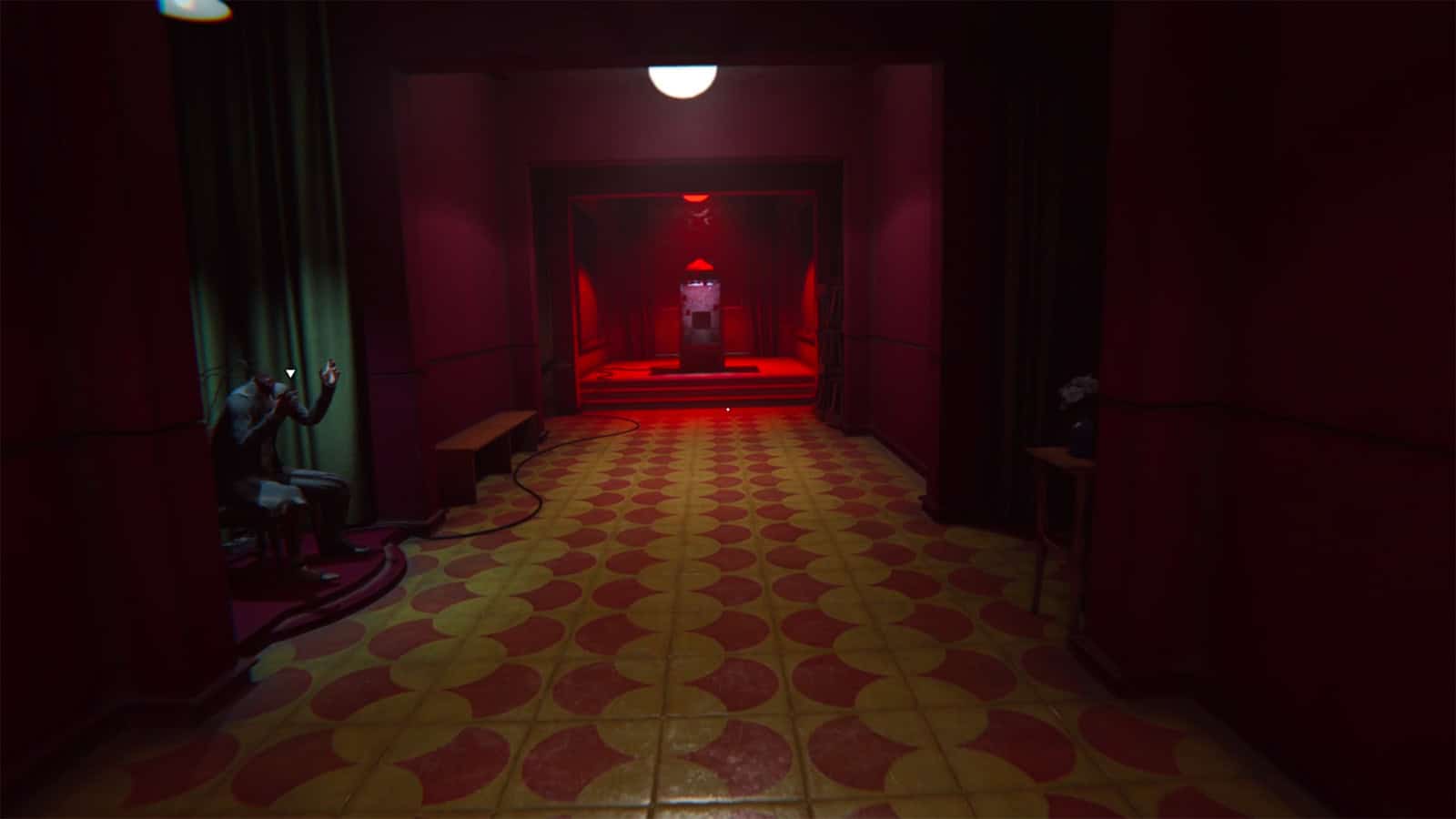

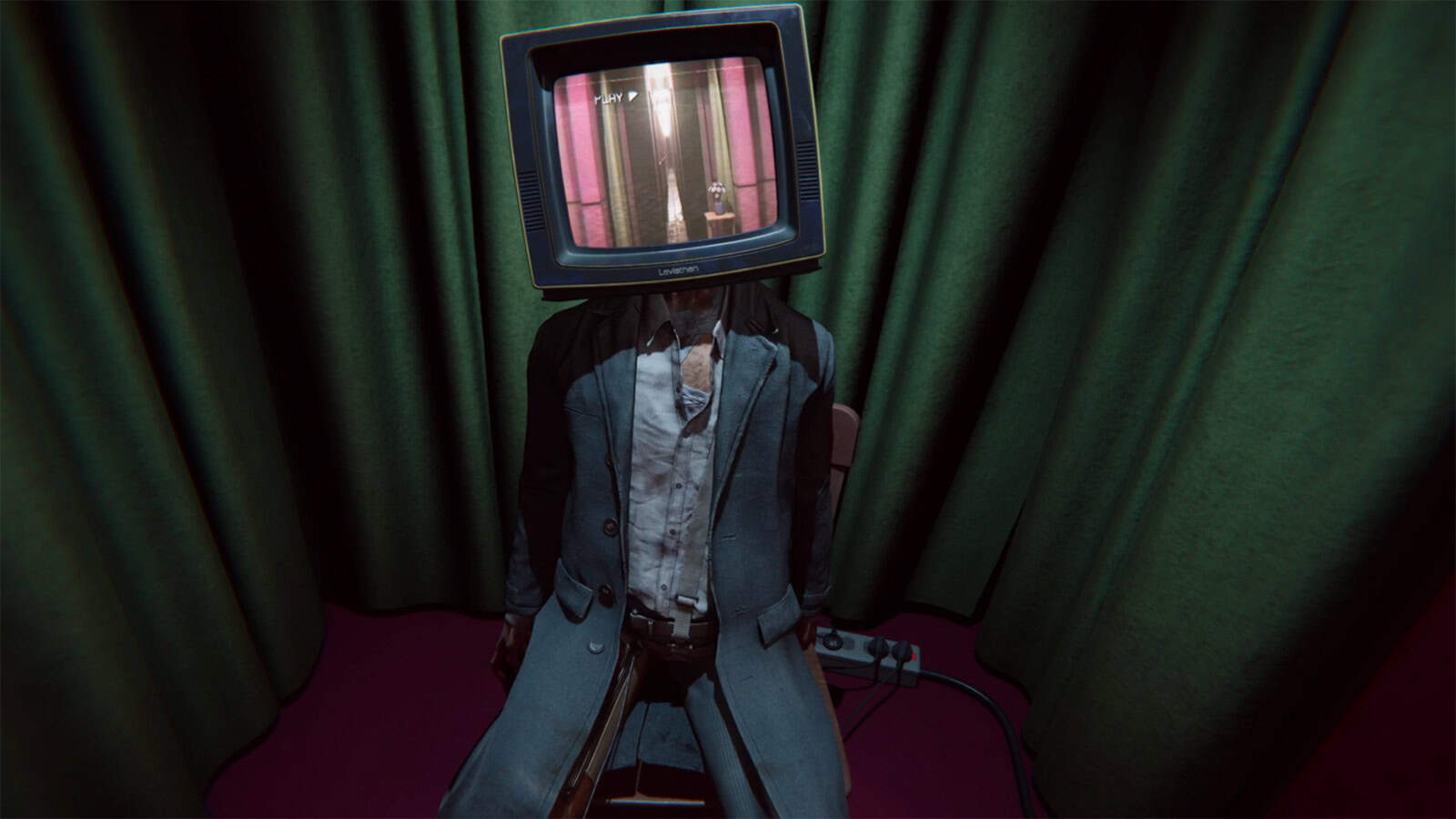
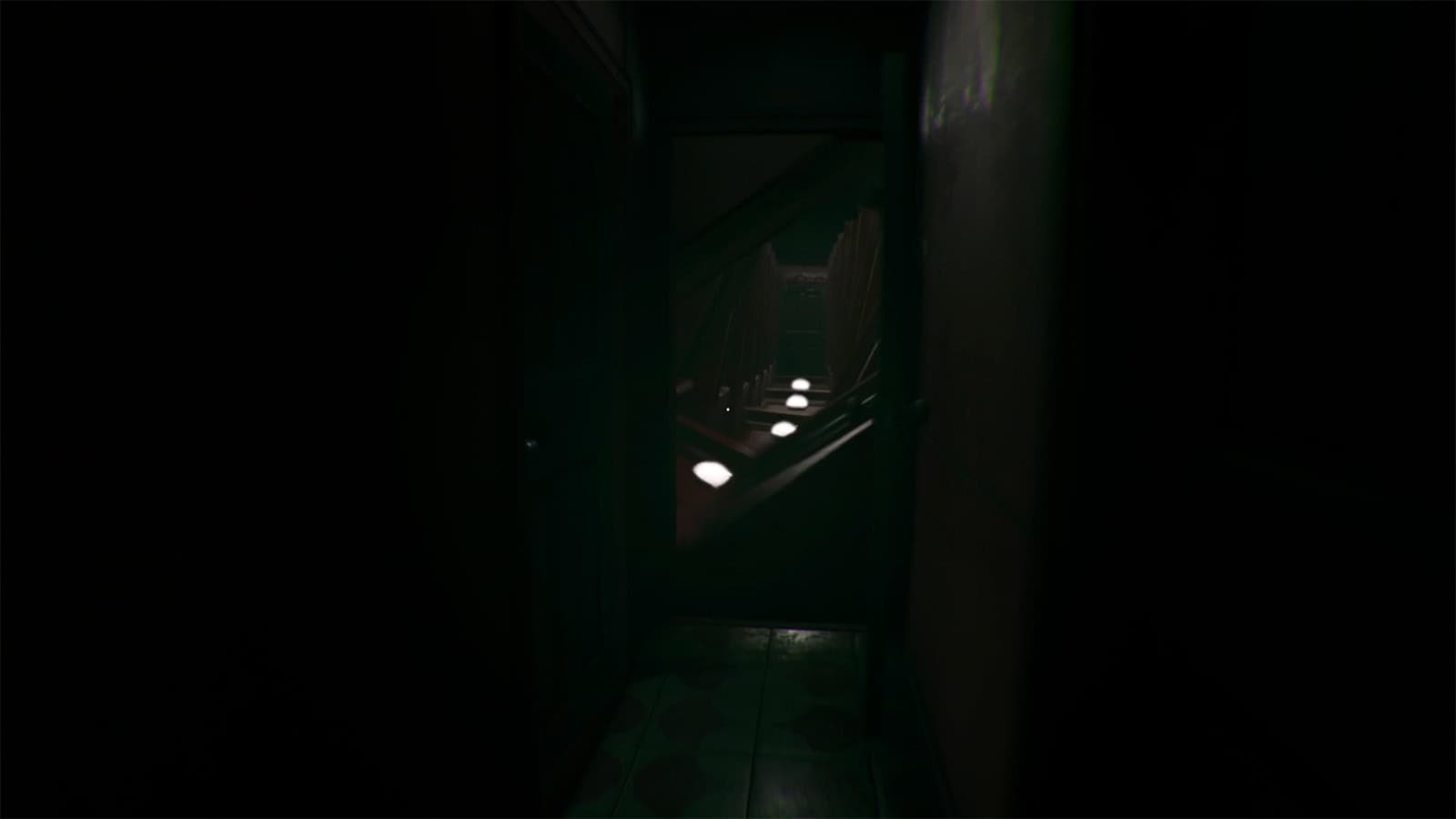
There’s no doubt that Shanghai-based developer Pollard Studio opted for a more cinematic approach to the game, keeping its gameplay simplistic and limited to interactions and puzzle solving so you focus on lore, environments, and narrative. It worked perfectly for me, as I found each location soaked in eerie atmosphere with tense moments heightened by the game’s phenomenal voice acting.
I just wanted to learn more about where I was and what was going on. The demo fortunately refused to give me any immediate answers, leaving me wanting more and spending the remainder of the day trying to piece everything together; why are people being experimented on, why did the monster want Shawn’s tape recorder, why were there so many cassettes in the hospital room, and what exactly is the Leviathan Corporation doing?
There’s no release date for KARMA: The Dark World yet, but it will release for PC via Steam, PS5, and Xbox Series consoles.

